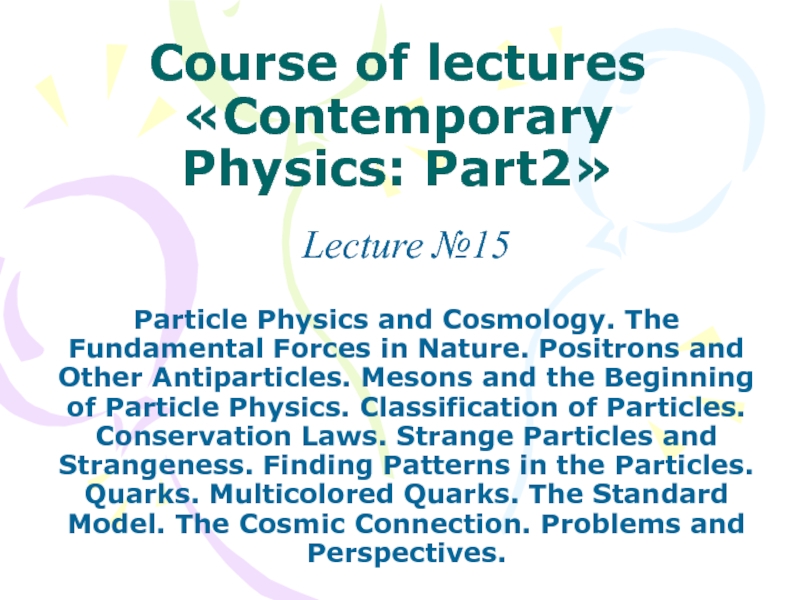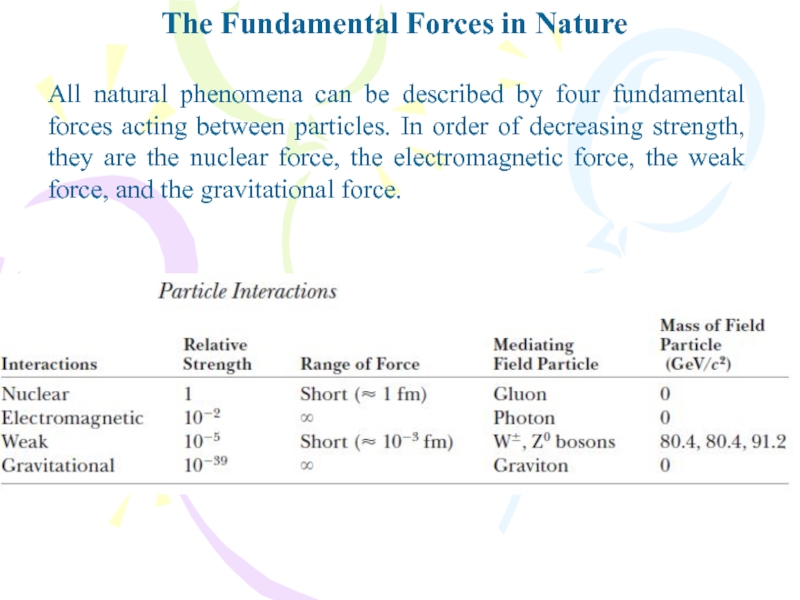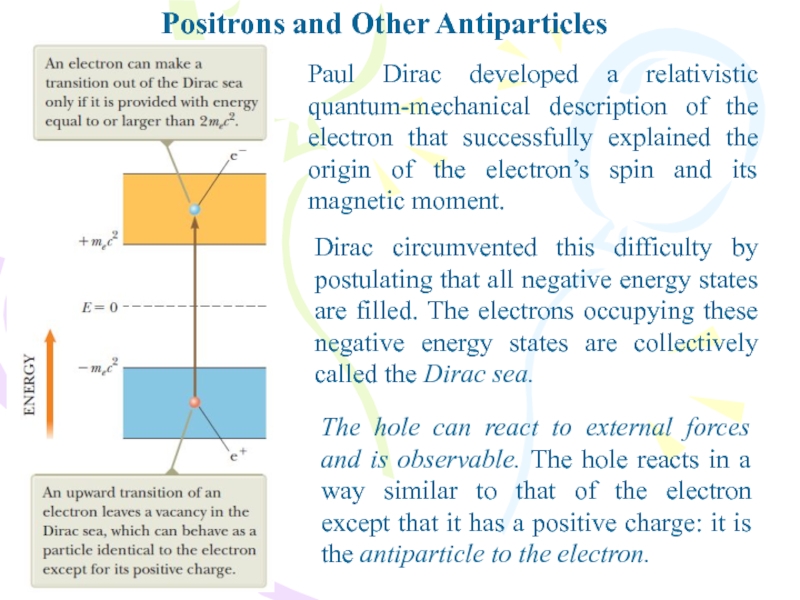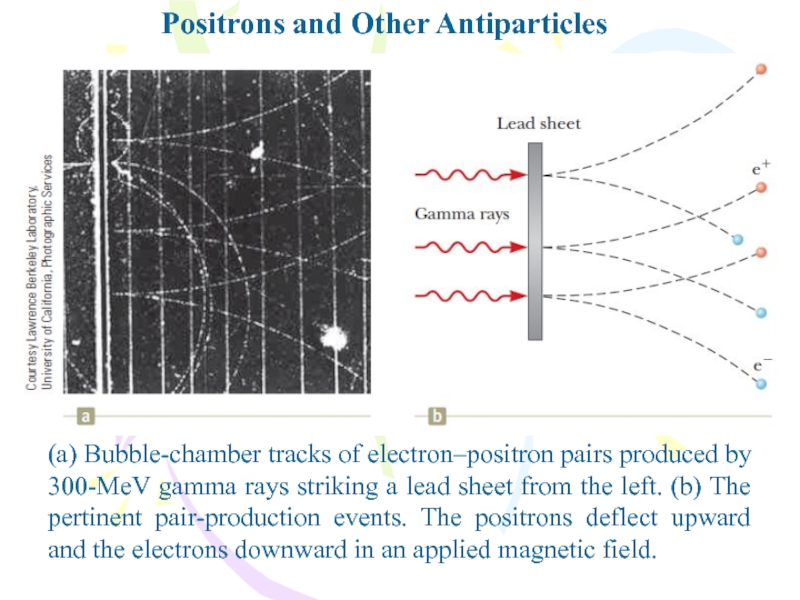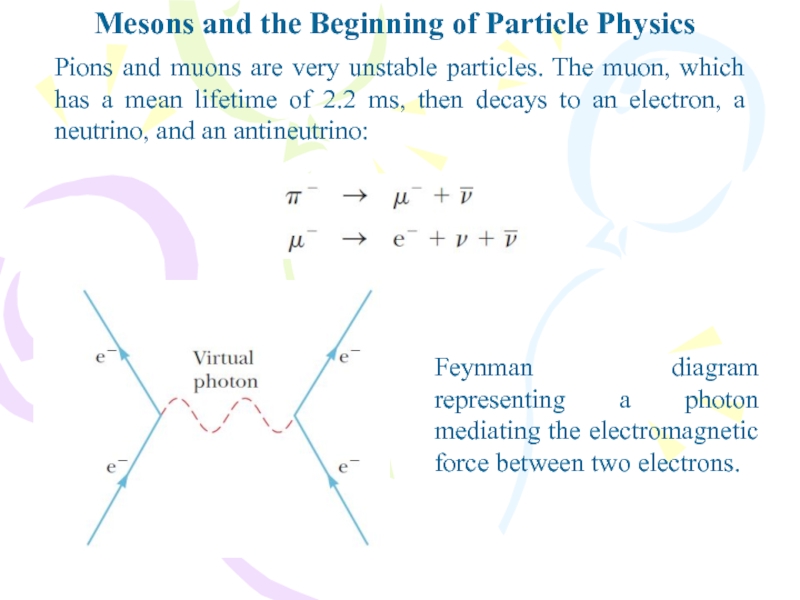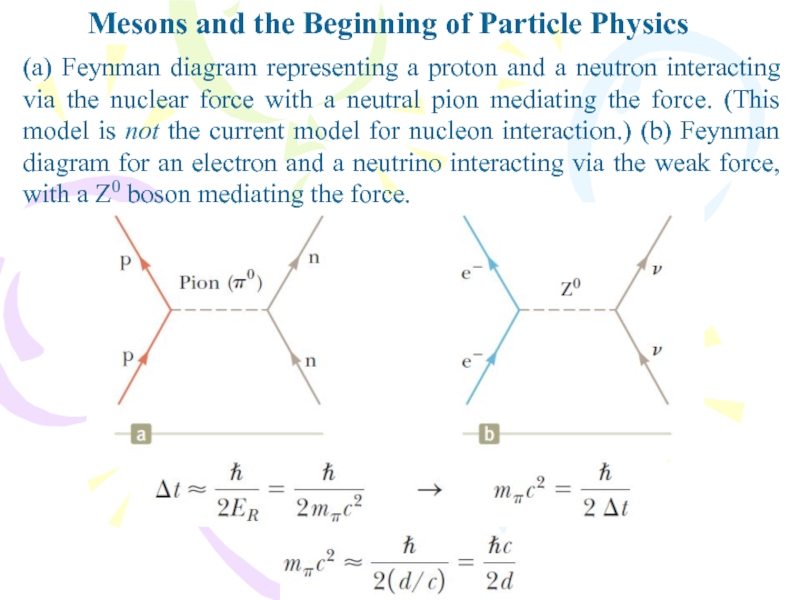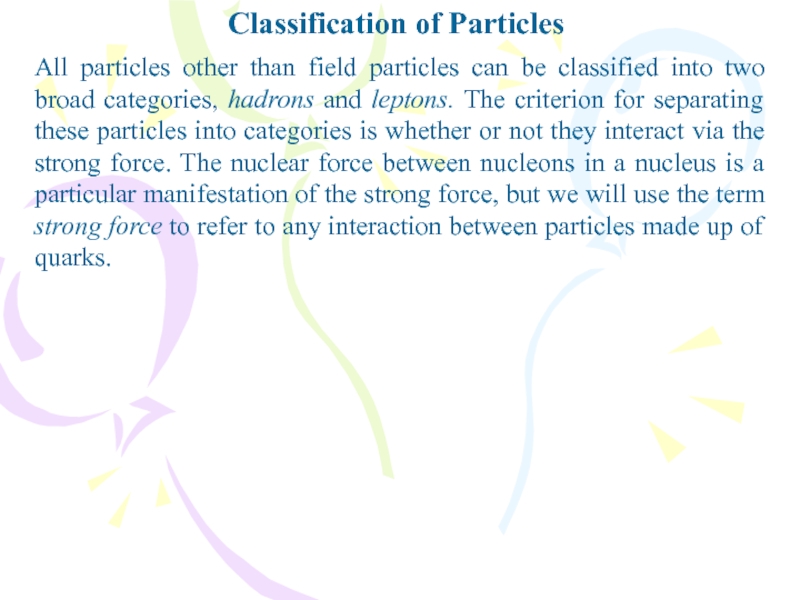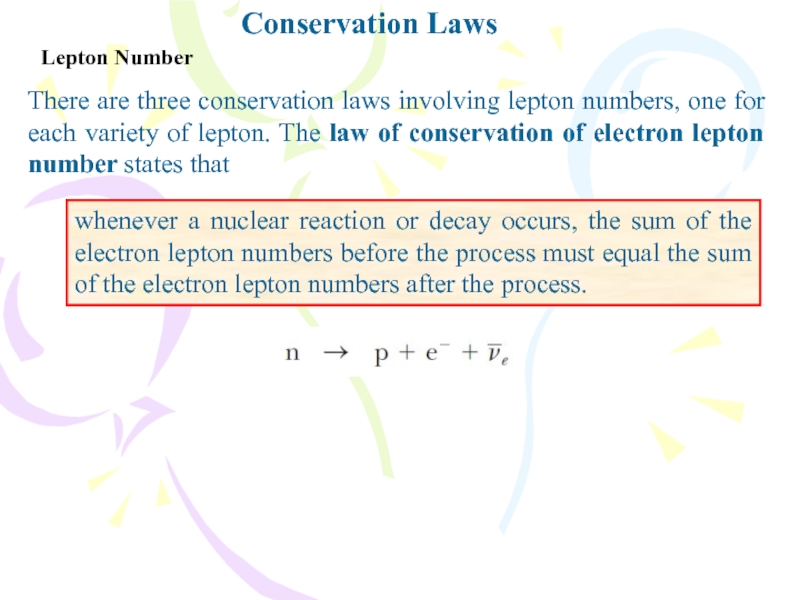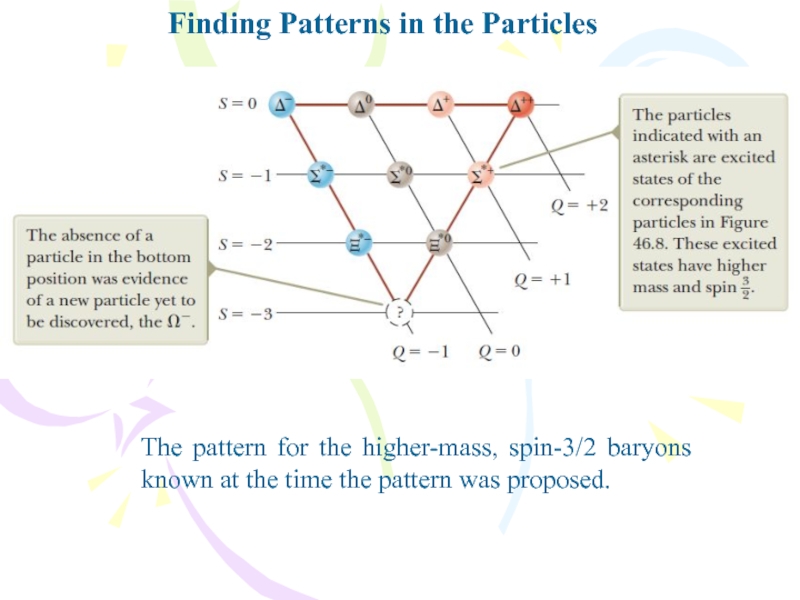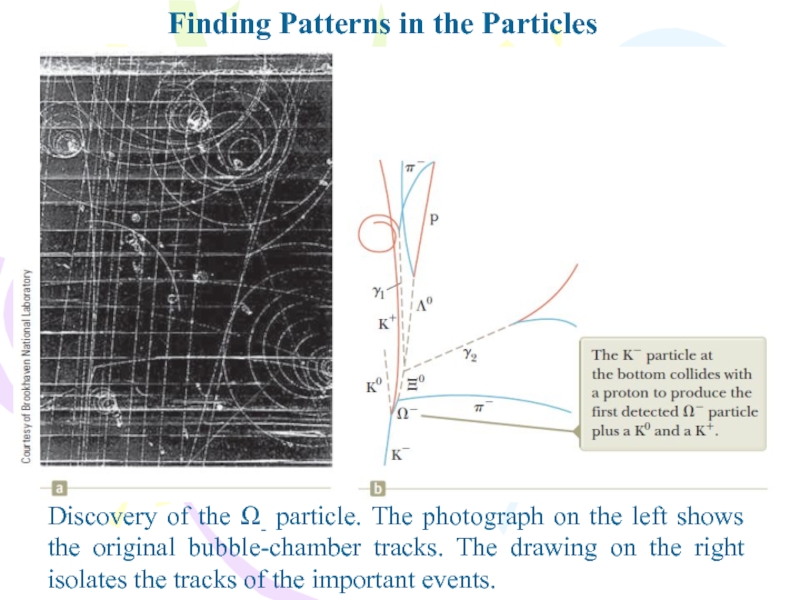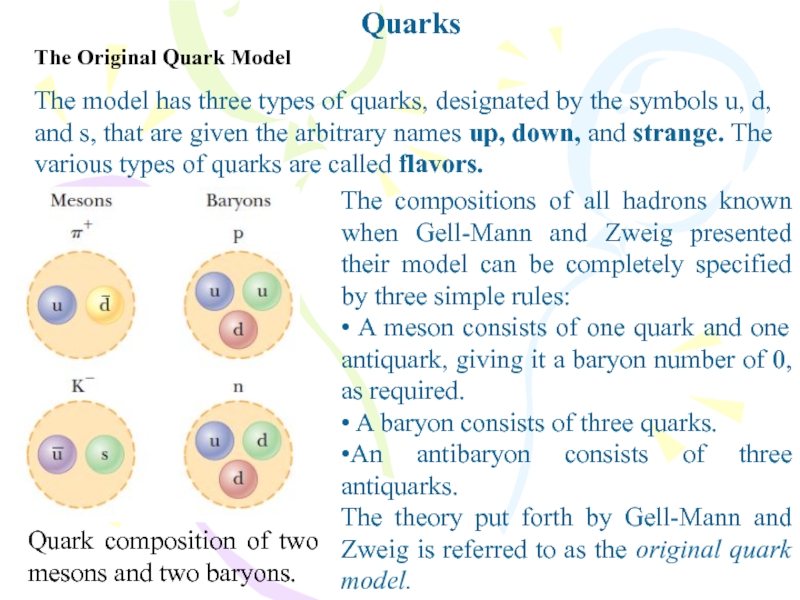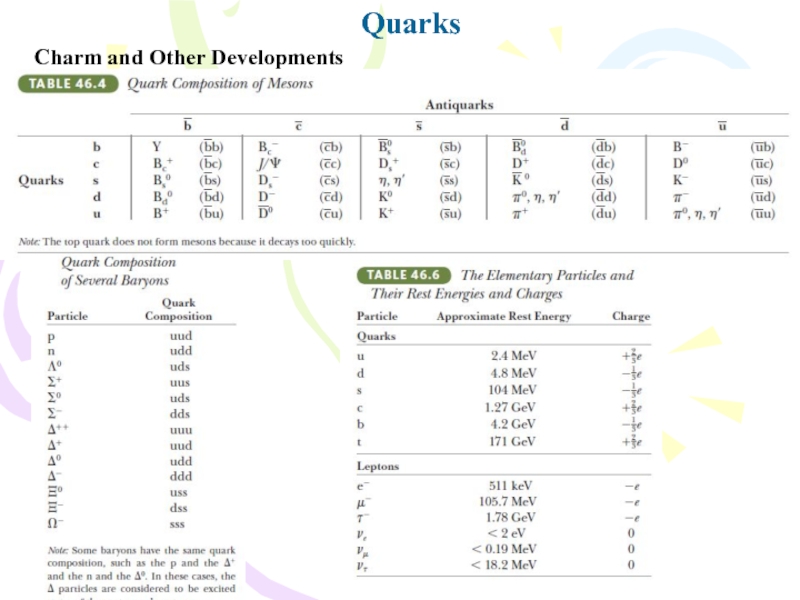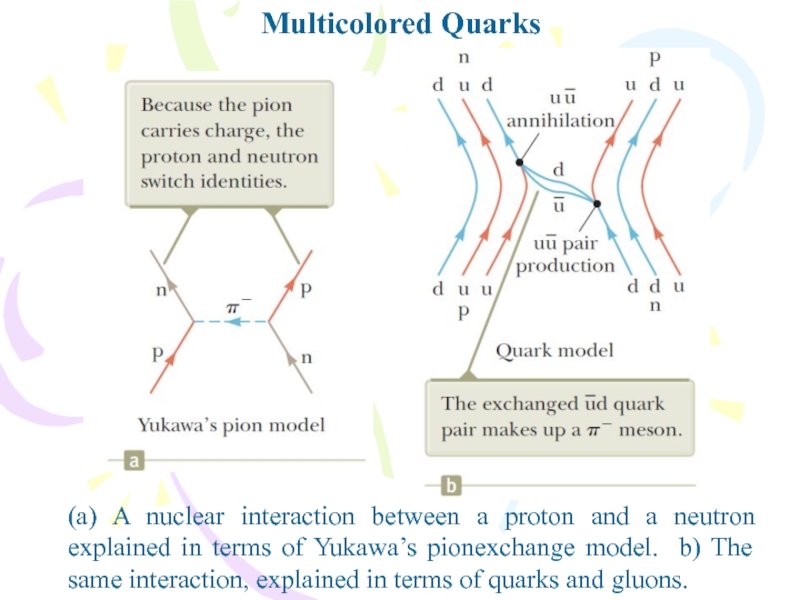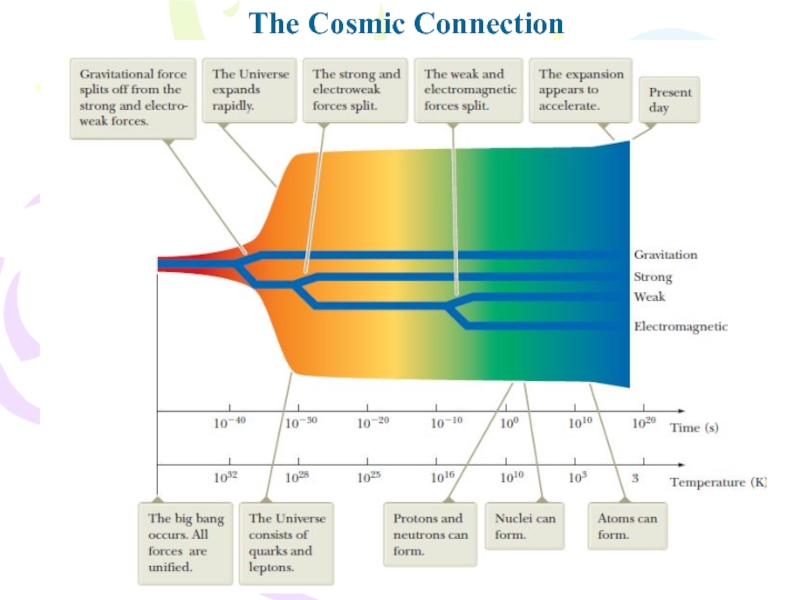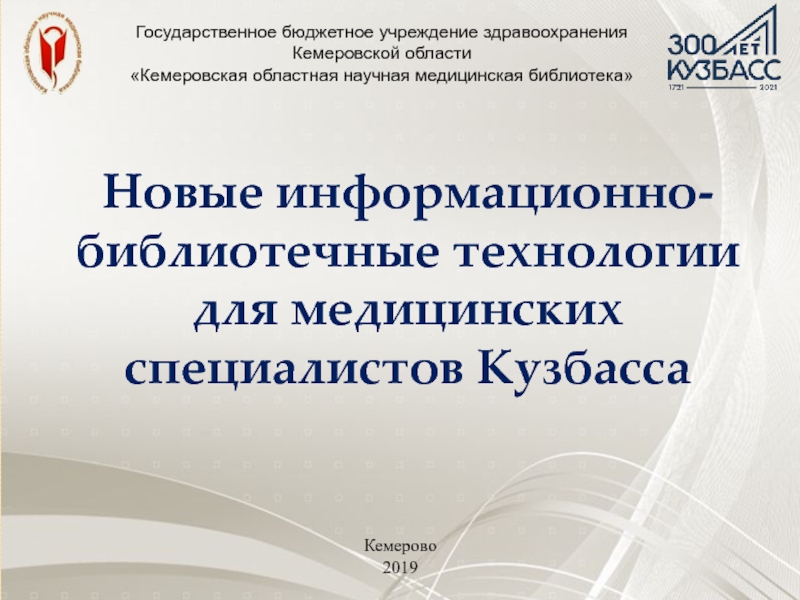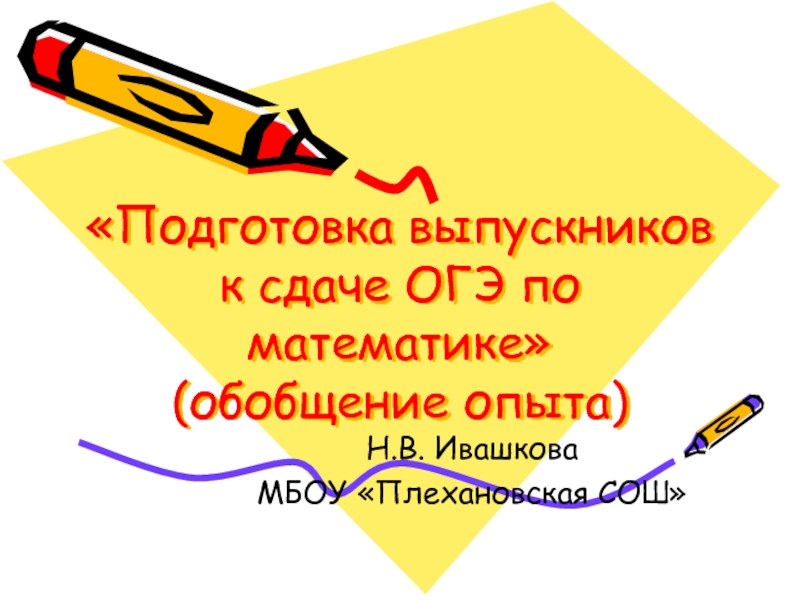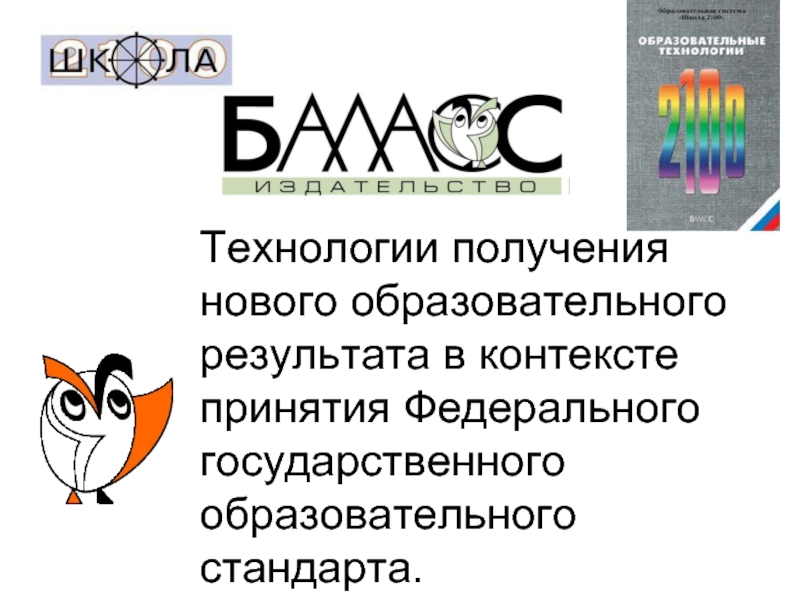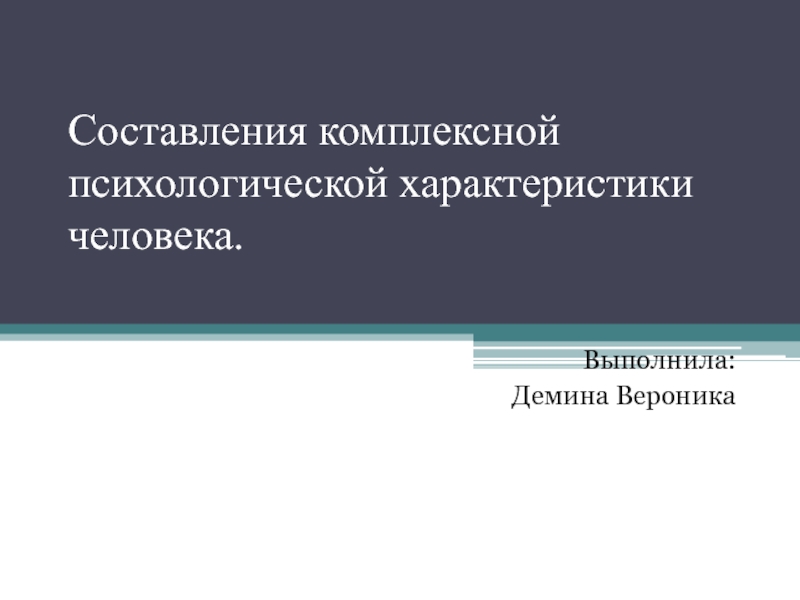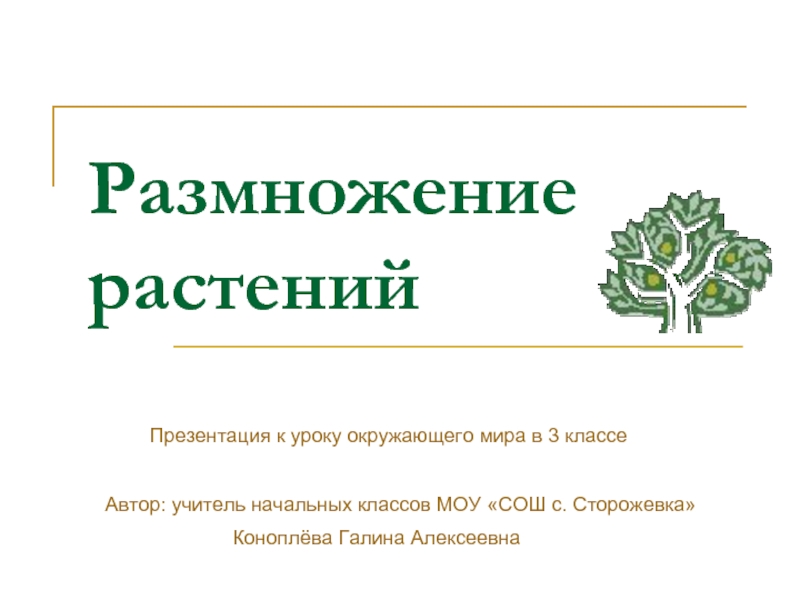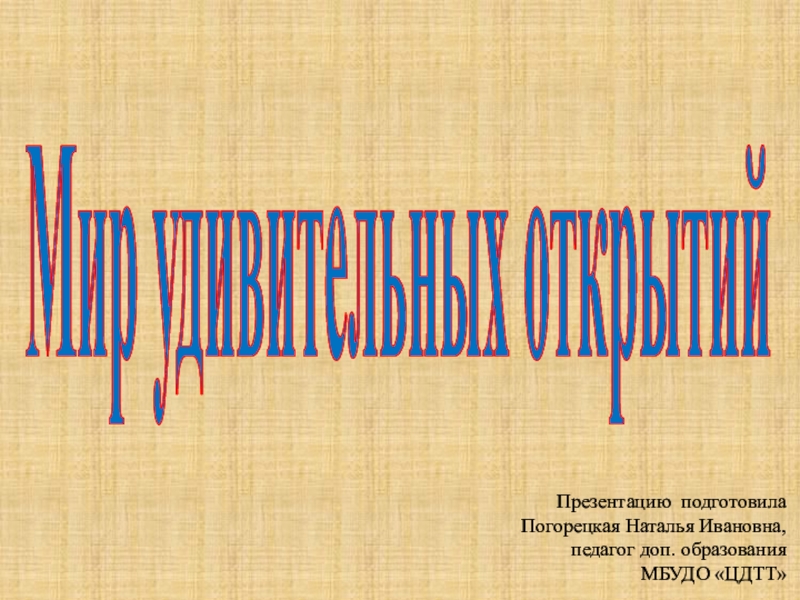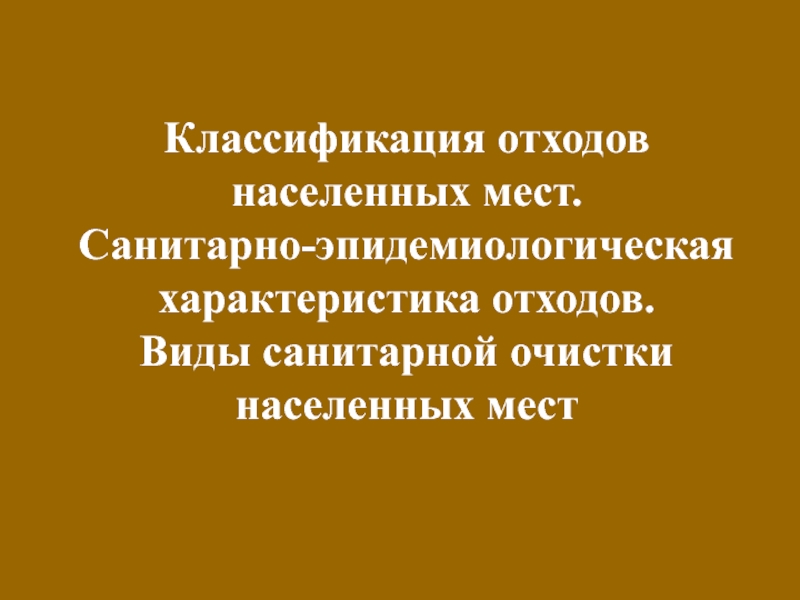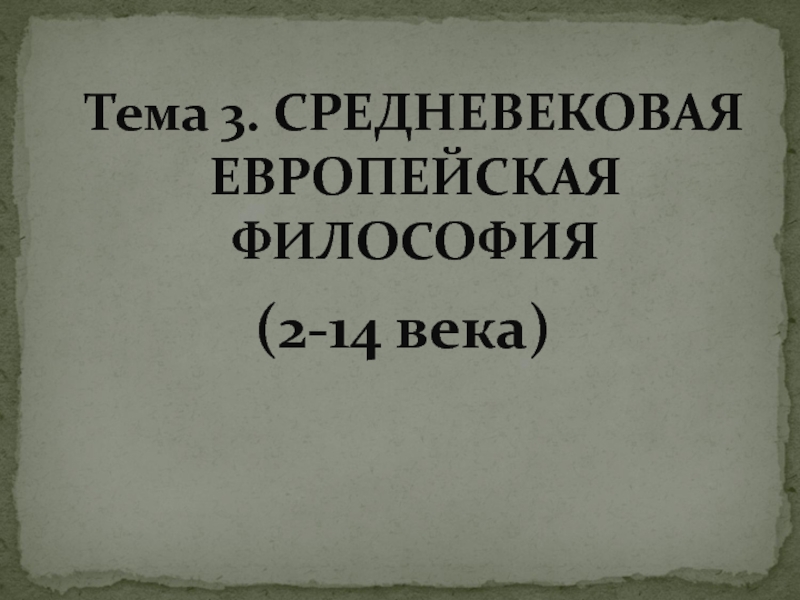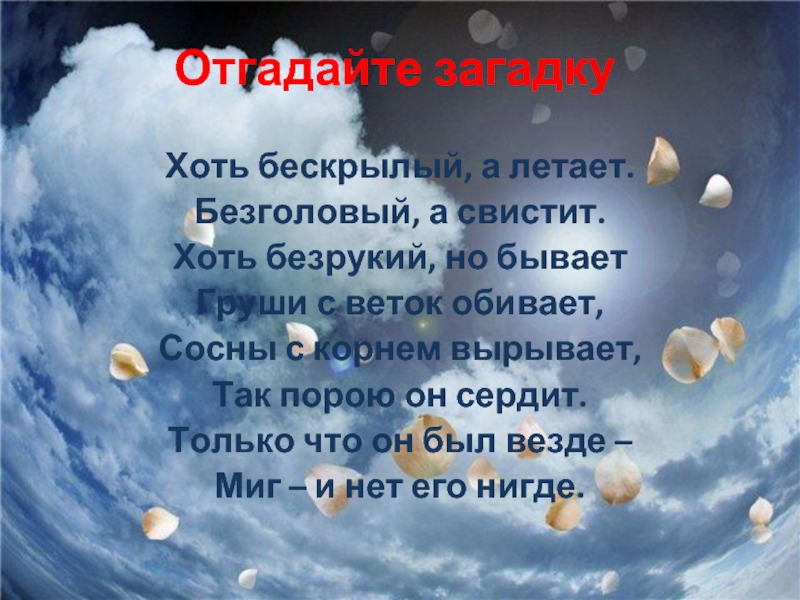Разделы презентаций
- Разное
- Английский язык
- Астрономия
- Алгебра
- Биология
- География
- Геометрия
- Детские презентации
- Информатика
- История
- Литература
- Математика
- Медицина
- Менеджмент
- Музыка
- МХК
- Немецкий язык
- ОБЖ
- Обществознание
- Окружающий мир
- Педагогика
- Русский язык
- Технология
- Физика
- Философия
- Химия
- Шаблоны, картинки для презентаций
- Экология
- Экономика
- Юриспруденция
Cosmology
Содержание
- 1. Cosmology
- 2. The Fundamental Forces in NatureAll natural phenomena
- 3. Positrons and Other AntiparticlesPaul Dirac developed a
- 4. Positrons and Other Antiparticles(a) Bubble-chamber tracks of
- 5. Mesons and the Beginning of Particle PhysicsFeynman
- 6. Mesons and the Beginning of Particle Physics(a)
- 7. Classification of ParticlesAll particles other than field
- 8. Classification of Particles
- 9. Conservation LawsBaryon NumberExperimental results show that whenever
- 10. Conservation LawsLepton NumberThere are three conservation laws
- 11. Strange Particles and StrangenessThe law of conservation
- 12. Finding Patterns in the Particles(a) The hexagonal
- 13. Finding Patterns in the ParticlesThe pattern for
- 14. Finding Patterns in the ParticlesDiscovery of the
- 15. QuarksThe Original Quark ModelThe model has three
- 16. QuarksCharm and Other Developments
- 17. Multicolored QuarksThe theory of how quarks interact
- 18. Multicolored Quarks(a) A nuclear interaction between a
- 19. The Standard ModelThe combination of the electroweak
- 20. The Cosmic Connection
- 21. Скачать презентанцию
Слайды и текст этой презентации
Слайд 2The Fundamental Forces in Nature
All natural phenomena can be described
by four fundamental forces acting between particles. In order of
decreasing strength, they are the nuclear force, the electromagnetic force, the weak force, and the gravitational force.Слайд 3Positrons and Other Antiparticles
Paul Dirac developed a relativistic quantum-mechanical description
of the electron that successfully explained the origin of the
electron’s spin and its magnetic moment.Dirac circumvented this difficulty by postulating that all negative energy states are filled. The electrons occupying these negative energy states are collectively called the Dirac sea.
The hole can react to external forces and is observable. The hole reacts in a way similar to that of the electron except that it has a positive charge: it is the antiparticle to the electron.
Слайд 4Positrons and Other Antiparticles
(a) Bubble-chamber tracks of electron–positron pairs produced
by 300-MeV gamma rays striking a lead sheet from the
left. (b) The pertinent pair-production events. The positrons deflect upward and the electrons downward in an applied magnetic field.Слайд 5Mesons and the Beginning of Particle Physics
Feynman diagram representing a
photon mediating the electromagnetic force between two electrons.
Pions and muons
are very unstable particles. The muon, which has a mean lifetime of 2.2 ms, then decays to an electron, a neutrino, and an antineutrino:Слайд 6Mesons and the Beginning of Particle Physics
(a) Feynman diagram representing
a proton and a neutron interacting via the nuclear force
with a neutral pion mediating the force. (This model is not the current model for nucleon interaction.) (b) Feynman diagram for an electron and a neutrino interacting via the weak force, with a Z0 boson mediating the force.Слайд 7Classification of Particles
All particles other than field particles can be
classified into two broad categories, hadrons and leptons. The criterion
for separating these particles into categories is whether or not they interact via the strong force. The nuclear force between nucleons in a nucleus is a particular manifestation of the strong force, but we will use the term strong force to refer to any interaction between particles made up of quarks.Слайд 9Conservation Laws
Baryon Number
Experimental results show that whenever a baryon is
created in a decay or nuclear reaction, an antibaryon is
also created. This scheme can be quantified by assigning every particle a quantum number, the baryon number, as follows: B =+1 for all baryons, B=-1 for all antibaryons, and B=0 for all other particles. The law of conservation of baryon number states thatwhenever a nuclear reaction or decay occurs, the sum of the baryon numbers before the process must equal the sum of the baryon numbers after the process.
Слайд 10Conservation Laws
Lepton Number
There are three conservation laws involving lepton numbers,
one for each variety of lepton. The law of conservation
of electron lepton number states thatwhenever a nuclear reaction or decay occurs, the sum of the electron lepton numbers before the process must equal the sum of the electron lepton numbers after the process.
Слайд 11Strange Particles and Strangeness
The law of conservation of strangeness states
that
in a nuclear reaction or decay that occurs via the
strong force, strangeness is conserved; that is, the sum of the strangeness numbers before the process must equal the sum of the strangeness numbers after the process. In processes that occur via the weak interaction, strangeness may not be conserved.Слайд 12Finding Patterns in the Particles
(a) The hexagonal eightfold-way pattern for
the eight spin-1/2 baryons. This strangenessversus-charge plot uses a sloping
axis for charge number Q and a horizontal axis for strangeness S. (b) The eightfold-way pattern for the nine spin-zero mesons.Слайд 13Finding Patterns in the Particles
The pattern for the higher-mass, spin-3/2
baryons known at the time the pattern was proposed.
Слайд 14Finding Patterns in the Particles
Discovery of the Ω- particle. The
photograph on the left shows the original bubble-chamber tracks. The
drawing on the right isolates the tracks of the important events.Слайд 15Quarks
The Original Quark Model
The model has three types of quarks,
designated by the symbols u, d, and s, that are
given the arbitrary names up, down, and strange. The various types of quarks are called flavors.Quark composition of two mesons and two baryons.
The compositions of all hadrons known when Gell-Mann and Zweig presented their model can be completely specified by three simple rules:
• A meson consists of one quark and one antiquark, giving it a baryon number of 0, as required.
• A baryon consists of three quarks.
•An antibaryon consists of three antiquarks.
The theory put forth by Gell-Mann and Zweig is referred to as the original quark model.
Слайд 17Multicolored Quarks
The theory of how quarks interact with each other
is called quantum chromodynamics, or QCD, to parallel the name
quantum electrodynamics (the theory of the electrical interaction between light and matter). In QCD, each quark is said to carry a color charge, in analogy to electric charge. The strong force between quarks is often called the color force. Therefore, the terms strong force and color force are used interchangeably.(a) A green quark is attracted to an antigreen quark. This forms a meson whose quark structure is ( ). (b) Three quarks of different
colors attract one another to form a baryon.
Слайд 18Multicolored Quarks
(a) A nuclear interaction between a proton and a
neutron explained in terms of Yukawa’s pionexchange model. b) The
same interaction, explained in terms of quarks and gluons.Слайд 19The Standard Model
The combination of the electroweak theory and QCD
for the strong interaction is referred to in high-energy physics
as the Standard Model.The Standard Model of particle physics.
